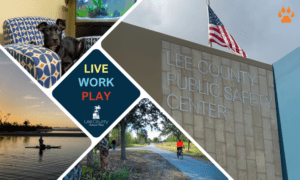By: Rachel Carter

In May of 2014, for the first time in years, I could stand on a bridge or a rooftop and not think about jumping off. It may sound dramatic, but it’s true. For the first time in three years, I was dreaming about what the future could hold for me again. But now—miraculously—good things are happening. I got a new lease on life. I am now sharing my story with others as often as I can.
In the year 2000 I was diagnosed with Multiple Sclerosis (MS). In my fourteenth year of suffering this debilitating disease, I was cured using a hematopoietic stem cell transplant (HSCT), also known as a bone marrow transplant. This procedure is currently not available to most MS sufferers in the United States. MS affects an estimated 400,000 in the US, and more than 2.3 million people worldwide.
MS is a chronic condition that triggers the immune system to attack the myelin sheath of the brain and spinal cord. These attacks cause lesions that make the brain unable to communicate with the body, ultimately impairing the person’s ability to control movement. When one has an exacerbation or “flair-up” it means part of the brain or spinal cord is literally being eaten away by one’s own immune system. When the attack on the myelin stops, the person can be in remission for weeks, months or years. In the worst type of MS, a person never goes into remission. A person who does go into remission may recover some of the abilities they lost during the exacerbation, but they never know how much will be recovered.
MS is a terrifying disease. No two people have the same symptoms or experience the progression of the disease at the same rate. One could end up in a wheelchair within a year of diagnosis, or still be highly functioning in 40 years.
When I was diagnosed, disease-modifying drugs were fairly new. (The first one was released in 1993). I immediately started on one. I know now that, despite appearances, none of them slowed the progress of my disease.
Because I had very few clinical symptoms (physical limitations that can be measured), I always felt fortunate that I was relatively unaffected by my disease. I got married, had three kids, worked full time, and worked out five days a week. I ran two full marathons and five half-marathons. Many times I told my doctor I was having an exacerbation, but because he was unable to measure significant weakness, he did not agree. I attribute his disbelief to my continued physical fitness. This cycle continued for over ten years.
In 2011, I started to decline—rapidly. This was when I shifted from being able to make choices about my life to merely surviving. Every day was filled with symptoms constraining what I could physically do. What energy I had went into survival activities – things I had to do, like feeding my kids. I could no longer make it through a full day’s work; some days I was so fatigued I just stayed in bed. I definitely couldn’t run; I couldn’t even walk up a flight of stairs without resting halfway up. Cleaning the kitchen often lead to broken dishes—that is if I had the strength to lift a plate. I also had cognitive and emotional symptoms that were making it very hard to think or make decisions. I could no longer live a normal life. This all happened in the span of only two years.
The worst part of this period in my life was living in constant pain. The skin on my back felt like someone had poured a vat of boiling oil on me, my arms had a deep and constant ache and it felt like bugs were crawling under my skin. The only thing that could slightly help was a serious narcotic. I had to pop several pills every four hours just to be able to bear it.
My husband was struggling to work full time and take on most of the household duties. Seeing me take so many narcotics worried him greatly. My decline led to us asking for more help from family and friends. My older children went to live with relatives. I eventually went on disability because doing simple things like washing and feeding myself was so challenging.
As this steep decline began, my doctor of eight years said he felt he could no longer help me. He recommended that I go to Oregon Health and Science University (OHSU), considered a top hospital for specialties.
When I had my first MRI at OHSU, it turned out I had over 55 lesions and several “black holes” (spots in the brain where the matter is completely gone). I tried several new and dangerous disease-modifying drugs with very scary side effects—including death. It was clear I was losing the ability to live my life.
It all changed when I met another mother in the parking lot of my daughter’s school who also had MS. She told me about a study in Chicago she was trying to get into offering the revolutionary treatment HSCT for MS. This radical treatment actually offered a cure. How had I not heard of this? I was being treated at one of the best research hospitals in the country, and I had to hear about a cure via word of mouth!
That very night, my husband and I began our research. Even online, the only information available we found was from virtual “word-of-mouth” sources like blogs and Facebook pages. Still, the reported results coming out of the study in Chicago and countries like Italy and Russia were nothing short of miraculous.
The theory of HSCT curing MS is that if the compromised immune system is destroyed from high dose chemotherapy and regenerated using stem cells from the same individual, the new immune system will “reset” and not mistakenly attack the nerves.
HSCT is also a common treatment for several types of cancer, but is still considered experimental when used for MS. They are still conducting Phase 3 MS trials that have yet to be published in medical journals. It is reported to successfully cure MS in over 85 percent of cases, and the mortality rate is now less than one percent. My family knew immediately I had to pursue HSCT. This was my only option with hope.
HSCT treatment takes weeks or months in a hospital and then another year to reboot the immune system, followed by up to eight years to recover. This was not something my husband and I could pursue alone; we had to get a support team on board. I needed people to care for my children, I needed a caretaker with me during this treatment, and my husband had to continue to work. I found my family, church and friends were amazingly supportive.
I immediately made an appointment with my OHSU neurologist to discuss this treatment. She had never heard of a stem cell transplant being used for MS. She began to do
her own research and was interested in possibly starting her own study study at OHSU, but she and I agreed that I could not wait for that to come to fruition. Funding and establishing a medical study like this takes years, and the longer I waited for treatment the more disabled I would become.
Through additional weeks of research, we found that the treatment is being offered in a handful of states set up as studies, and several different countries including Russia, Italy, Germany, Sweden, Spain, Israel, South Africa, and India (this may not be a complete list). Our first choices were in the US, but once we found out that insurance would not likely cover the treatment, we started looking for a backup in other countries due to our family’s economic limitations. For overseas possibilities we chose to restrict our search to Western Europe due to blood supply safety issues. After reviewing our choices, we applied to four very well-recognized programs, two in the US and two in Europe. I did not meet the criteria for two studies, but was accepted in Seattle, WA and Florence, IT.
Eventually we zeroed in on the Seattle Cancer Care Alliance (SCCA), a program reputed to have done more stem cell transplants than any other facility in the world. After filing for insurance coverage, being denied, and losing all three appeals, we made the choice to pursue treatment in Italy. The price of treatment there was $85,000 as opposed to $400,000 at SCCA. My family came together to decide who would travel with me and who would watch the children. We had a plan!
While we were arranging for the treatment in Italy, my husband had been diligently working up the chain of command at his company, telling our story and advocating for a change of policy. One week before I was scheduled to leave for Italy, he got a call. His company’s insurance had reversed the denial and was going to cover the cost of treatment in Seattle.
I finished HSCT treatment in Seattle in April of 2014, and just two months later I was nearly pain free. It took me eight years to recover completely, and nine to start running again. The process was frightening and often painful, but my pain is gone and I have my life back.
It is astonishing to me that a cure for MS exists, and yet American doctors who specialize in MS don’t even know about it. I don’t understand how this can be. If I had not met the right person at the right time, if I was still alive, I would still be living in constant pain and relying on relatives to help raise my children. As it is, I have the privilege of being able to say I will never take for granted how good it feels to live without pain. I will never complain about doing dishes or getting up in the morning.
HSCT is a very challenging treatment, but others with the disease must know there is a way to stop it. If sharing what happened to me can lift the medical veil of secrecy surrounding HSCT in the U.S., I’ll know I’m using my reclaimed ability to make choices to help others, and that my suffering wasn’t in vain.If you would like to read the whole story, buy my book Enduring the Cure: My MS Journey to the Brink of Death and Back. Available on Amazon in both paperback and kindle.








